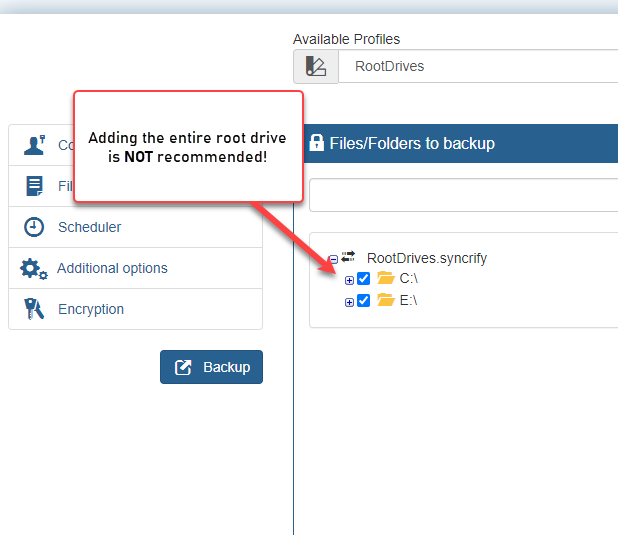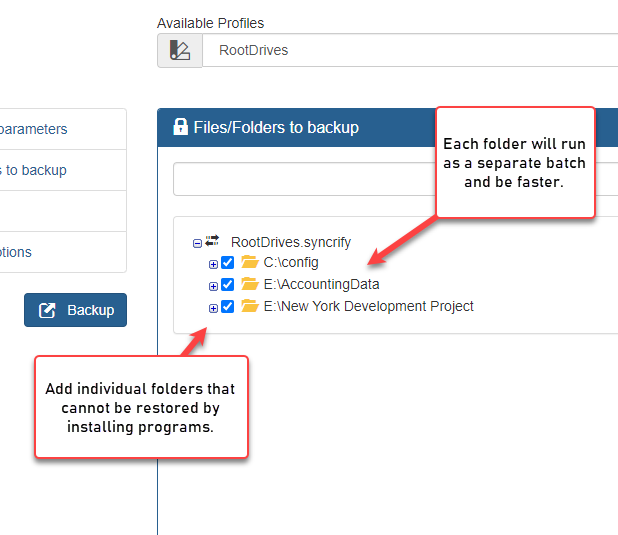Synametrics Technologies
Revolving around the core of technology
Document information
| Document ID: | 1558 |
|---|---|
| Subject: | Why is adding a root folder not a good idea |
| Creation date: | 10/22/10 9:50 AM |
| Last modified on: | 11/12/18 12:02 PM |
Adding a root folder to profile
Although it is possible, we do not recommend adding a root folder as a top-level folder to a profile. By root folder we mean
- C:\ - Entire C drive on Windows
- D:\ - Entire D drive on Windows
- / - Root drive on Linux/UNIX or Mac OSX
There are couple of reason why adding a root folder is not recommended
Reason 1
When you add a root drive, for example C:\ drive it may contain folders like:
- C:\Windows - Contains files that are installed by the OS
- C:\Temp - Contains temporary files that will eventually get deleted
- C:\Program Files - Contains installed programs
Reason 2
Every top level folder you add in Syncrify client runs in a batch. Therefore, when you add a root drive, the entire drive runs as one big batch, which is a lot slower than running several smaller batches.Recommended solution
Instead of adding a root drive, add individual folders that you want to backup.| Not recommended | Recommended | |
|---|---|---|

|

|
Exception
One exception to this rule occurs when you have an entire hard disk dedicated for data. For example H: Drive that is used to store user documents.
User comments
Posted by Dean Castaldo on 6/22/19 9:19 PM
Any idea as to why it will not backup the root folder I have a drive dedicated to just pics and it will not back it up at at. its like it skips that section
Posted by steve wiesner on 10/21/16 2:04 AM
so if I backup an entire working computer then I put in a new hard drive and restore it your saying it wont work? so I guess I should use windows image and if the computer dies use that to get the new one up and running then use syncrify for the other files?
Add a comment to this document
Do you have a helpful tip related to this document that you'd like to share with other users?
Important: This area is reserved for useful tips. Therefore, do not post any questions here. Instead, use our public forums to post questions.
